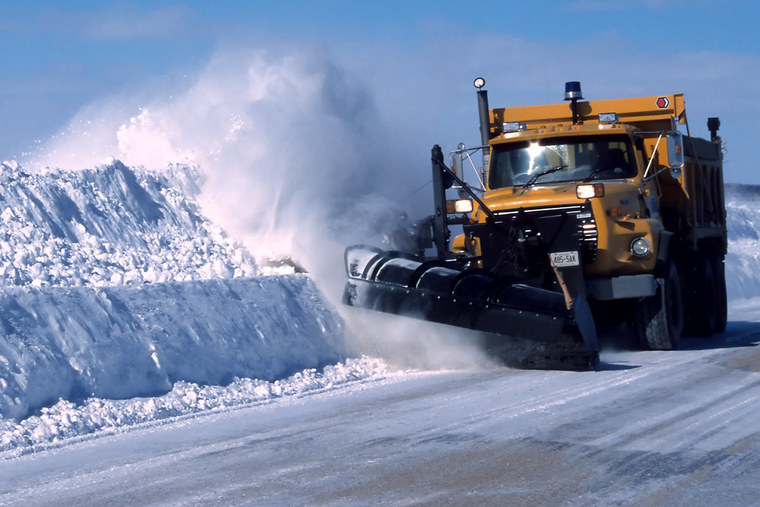Winter storms are an expected occurrence in the month from December through March and these past few months the entire country has been hit with severe winter weather, including in Northern Nevada. A storm hit the northern part of the state late New Year’s Eve, as icy weather conditions and cold weather continued for the rest of January. With the temperature reaching the mid-20s and going as low as the teen, the National Weather Service issued a Winter Weather Advisory for most of the month.
In addition to poor road conditions, there were reported power outages to begin the new year, and 35,000 Nevada residents in Washoe County, Carson City, Storey County and Lyon counties were impacted. Washoe County was the most heavily hit, with 17,500 residents without power. CARES campuses were opened throughout the city for those without shelter or heat during these severe conditions and stayed open as long as winter weather continued. [1]
Poor Road Conditions in Northern Nevada
The icy road conditions resulted in multiple spinouts and crashes on Nevada roads, and drivers are cautioned to be weary of black ice. Driving on snow and ice can be more challenging than on dry roads, and the following are some tips to remember when driving on snow covered or icy roads:
- Keep a Safe Following Distance Between Yourself and Other Cars: Increase your following distance and drive steadily since visibility can be reduced in snowy conditions and there is a higher chance of skidding or spinning out if you hit your brakes too quickly. Increase your following distance to at least 7-8 seconds when snow is on the ground to avoid sliding into an auto accident.
- If You Begin to Slide, Steer into the Skid— losing control of your vehicle can be a scary and unfamiliar situation for most drivers. If this happens, stay calm and do not slam on the break and “steer into the skid”. Remove your foot from the gas and brake and turn your wheel into the direction that the back of the vehicle is skidding towards. As your vehicle begins to correct, turn the wheel in the direction of the desired path.
- Stay Aware of Surrounding Traffic— Being aware of other vehicles around you is important and be sure to check blind spot mirrors and rear-view mirrors regularly. This can help you adjust your speed, as well as detect if cars around you are skidding.
- Drive Slow and Avoid Accelerating: Driving slowly is recommended when snow and ice is on the ground, and it is recommended to drive at half the normal speed. Additionally, driving in 1st or 2nd gear can increase your traction and control on the road. [2]
Snow-Related Injuries and Slip and Falls
Snowy weather can increase the risk of accidents both on the road and at home. Snowstorms often require shoveling driveways, and the ice and snow can lead to injuries, including slip-and-fall accidents in Reno. Last month, actor Jeremy Renner was hospitalized after suffering serious injuries while operating his snow tractor near Lake Tahoe. Sheriff Darin Balaam reported that Renner was seriously hurt when his snowcat ran him over after he used it to free a friend’s vehicle stuck in three feet of snow. Renner suffered chest and orthopedic injuries but is now in stable condition. [3]
Shoveling snow is a chore for many, but it comes with its risks, and the National Safety Commission states that it is responsible for thousands of injuries, and nearly 100 deaths a year. Not only does the ice and snow put you at a risk of slipping and injuring yourself, but the American Heart Association also suggests that shoveling snow can put people at a risk of a heart attack. Shoveling snow requires sudden exertion and the moving of up to a hundred pounds of snow, which can put a big strain on the heart. Those who are generally active are less at risk.
Additionally, the cold weather can increase one’s heart rate and blood pressure, as well as increase the chance of blood clots and constricted arteries, which can decrease blood supply. This is a risk even for healthy and active individuals, and those over the age of 40 that live a sedentary lifestyle should be more cautious.
If you choose to use a device like a snow blower to clear snow, be aware of the following safety tips:
- Turn the blower off if it jams and keep your hand away from moving parts of the machine.
- Running a snow blower in enclosed space can result in carbon monoxide poisoning.
- Add the fuel outdoors and before starting the snow blower. Never add fuel while it’s still running.
- Never leave a snow blower unattended while it is still running [4]
[2] https://driven2drive.com/a/blog/driving-in-snow-for-the-first-time-what-you-need-to-know
[3] https://www.npr.org/2023/01/04/1146880868/jeremy-renner-accident-snow-tractor-lake-tahoe
[4] https://www.nsc.org/community-safety/safety-topics/seasonal-safety/winter-safety/snow-shoveling?


